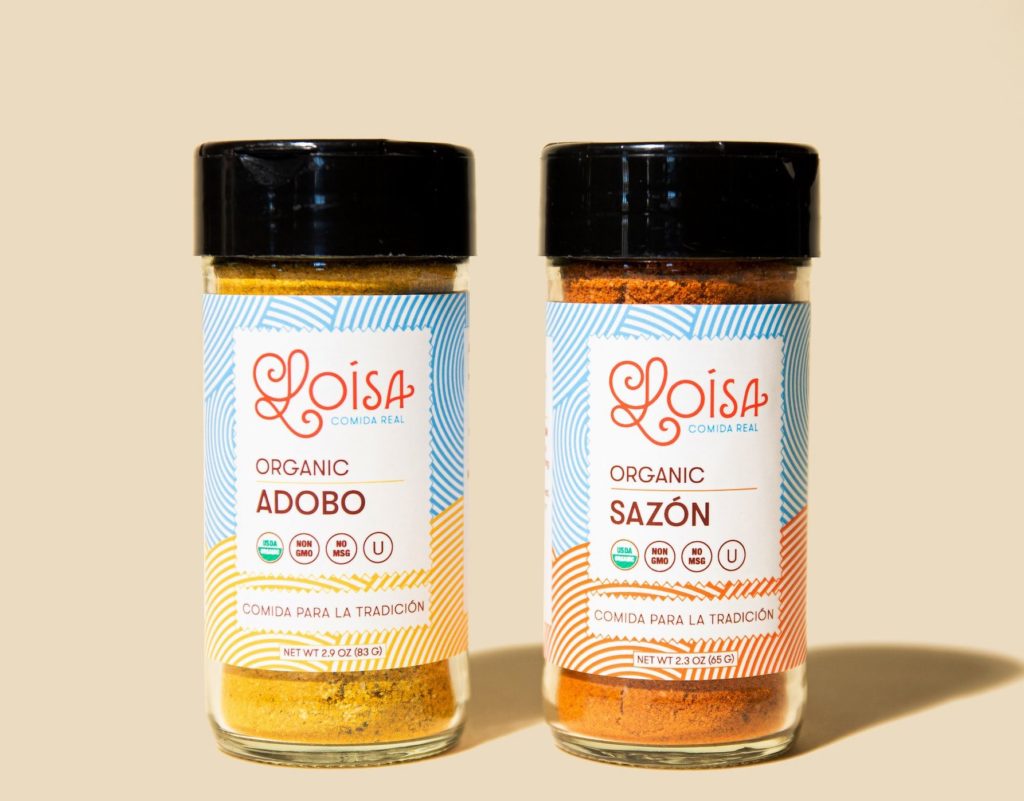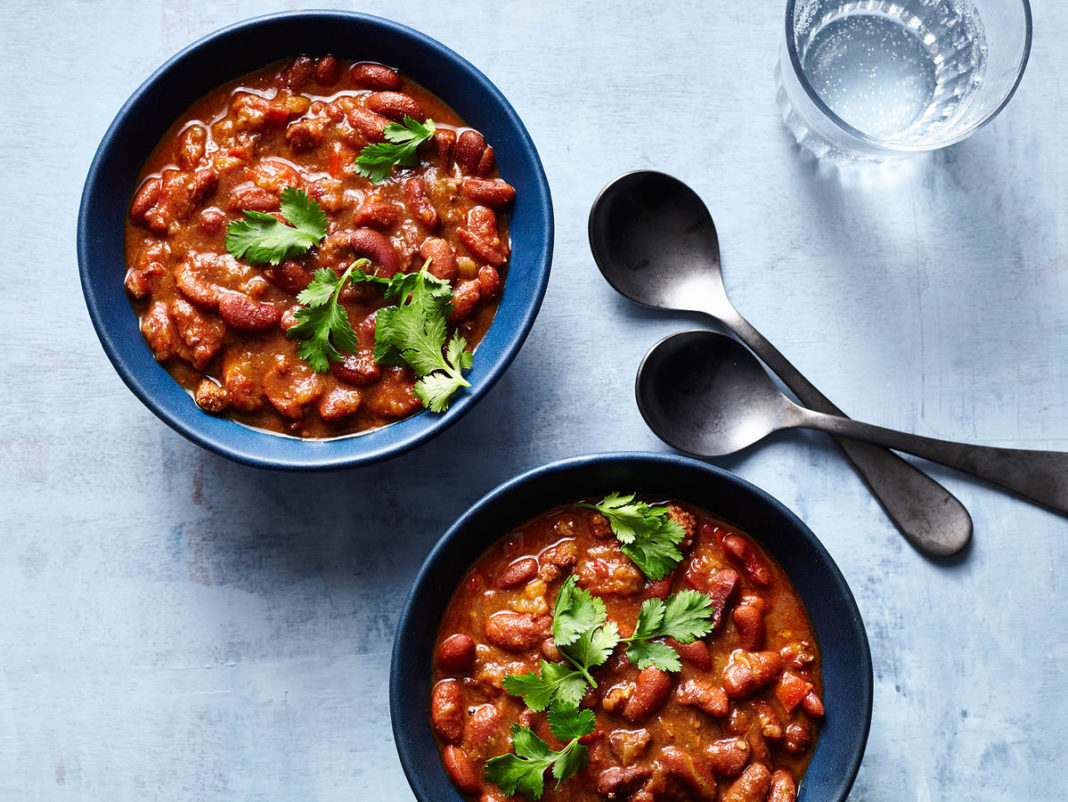Thank you to my colleagues at BELatina and other news outlets for reporting on Robert Unanue’s, CEO of Goya Foods, absurd pandering to the current administration. Yes, that same administration that has waged war against DACA, defended the decision to strip Latinx mothers of their babies and keep these dismembered families in cages, clownishly tried to build walls along lines that should have remained theoretical. This administration is who the CEO, who has benefitted from the millions in sales to these same victims and their families, bothered to defend.
To voice support for this particular president at this moment is passive-aggressive and arrogant. It’s condescending, dismissive of the very people your product targets, as well as a surprisingly dumb move from someone who had the Latin American goods market cornered to the tune of around $1 billion a year. No one asked this guy for his opinion; why would he offer it now and risk alienating his bullseye customer?
Media outlets are also reporting that the backlash from many has been swift and cutting. Latinx cooks are putting their homemade recipes on offer and a widespread boycott is rising organically from the rightfully disgruntled by Unanue’s remarks. I rarely respond to current events as are they are unfolding, needing usually more time to process and flesh things out, but this one is super easy for me: I’m not buying it.
Not everyone is offended enough to toss their can of adobo. Some have pointed to President Obama’s commendation of the company back in 2011 for its role in increasing the visibility of Latin products on the shelves. As an avid grocery shopper, I’d argue that in 2011, visibility alone was enough. But nearly a decade later, we deserve greater authenticity and transparency than Goya Foods provides its customers. The CEO’s uncalled for attack is as a good a catalyst as any for us to move along to the many other options available in 2020. Today there is the need to do much better than in 2011 and publishing what at best is a shitty, back-room conversation convinces me that the adobo gotta go.
What’s in a name?
In 2003, when I first moved to South Florida and began my love affair with Publix supermarkets and their wide selection of Latin American staples, I already avoided Goya. Before I break my arm patting myself on the back, my aversion was gut- and not brain-based. (Like you, I didn’t know yet what I know now.) But Goya is one of my favorite Spanish painters. His name made sense on the side of a can of olive oil (though I quickly preferred the taste and quality La Española or Carbonell) but not on the plastic shaker of Sazón. Sazón hails from Cuba or Puerto Rico or Barranquilla, why would a Spanish company be the go-to?
The brand name subconsciously called up for me a certain South American pride, making their cans of beans suspicious. Once in a while I would cave and buy a can of the famous black bean soup, but then a Nicaraguan friend once told me that if you add some onion and garlic powder to a can of black beans and cook them down, the effect is similar (try it for yourself!) and less salty. When babies came, I switched to buying dry beans more often, cooking them in a slow cooker, and adding a specifically Colombian gravy (more on the nuances of our individual cultures in a moment) instead.
When shopping for dried beans, please consider buying heirloom or organic beans, as these are better for our planet and the relative affordability of beans make them a good place to spend those extra cents that make a difference in taste and on our planet. Check out Whole Foods through Amazon or seek out American companies that support local industries as well as Latin American growers like Rancho Gordo , who will ship to you. Each of our cultures has a bean application for a reason. It is a meaningful, unifying, pan-Latin symbol, in addition to being a nutritious staple. We don’t need no stinkin’ Goya for that.
But I get that we don’t always have the time to cook beans from scratch, especially those desiccated bags we are abandoning, which sometimes require pre-soaking and long cooking. So let’s reach for a different can. Check out Conchita Foods, started and operated by Cuban immigrants to South Florida. They know their beans and plenty of other Latin American staples. Their guava paste is closer to Colombian bocadillo than other brands and I rely on their nice, big capers to serve alongside ajiaco bogotano, their ladyfingers for tiramisu, and their galletas Maria were some of my boys’ first solids. Their website is so sweet and homey, you’ll want to get some of these products right away and make all the recipes they provide.
Even though their name leads us down the same post-colonial path of that other loudmouth, adobo-peddling Spaniard, Iberia Foods is another strong contender in the bean market (and olive oil, canned fish, and other expected Iberian specialties). But their corporate associations indicate that this family is not enamored with authoritarian racists. They were bought by the Best Foods conglomerate, so that Iberia exists under the same umbrella as, for example, Badía spices and various smaller beverage companies rooted in Latin America and the Caribbean. They definitely have a corporate vibe, more like Goya than Conchita, but their reliance on native companies to build their brand is effective and laudable.
Speaking of spices
Beans may have gotten Goya’s foot in the door, but their adobo and sazón blends have kept those scents wafting out from kitchens around America for the last few decades. I am fortunate to have spent some time in India, where a super sincere home cook patiently explained to a group of us dumbasses that masala is not one specific blend of spices but rather the concept of blending spices; “curry” is not a sauce but a genre of food like “sauce” or “gravy” with many types and blends in existence.
In fact, the vagueness of the terms is precisely the point — each home cook has her own proprietary blend and, much like I have seen among my Latin and Middle Eastern people, the proportions are absolutely top secret. So if you come over to my place for some masala chai, for example, you might find that I put in cardamom and cinnamon but no black pepper, while another cook does differently.
Same with sazón and adobo. “Adobar” is to season or marinade. For me, with Colombian Spanish, the association is with salting, dry-rubbing, or brining meats before cooking (“voy a adobar la carne”). “Sazón” is a Latinate derivative like “seasoning” and this word carries the nuance of adjusting flavors on any dish via adding salt, pepper, and spices (“¿Quieres ponerle más sazón a la ensalada? No sabe a nada.”) Each abuela mixes her own abodo, every cook has her own sazón. So what are we doing when we buy those brightly-colored shakers from that asshole? Buying his grandma’s proprietary blend for our arroz con habichuelas?
We’re buying a whole lot of MSG and some old-ass herbs in a handy shaker. Again, I completely understand that not everyone had the time/patience/information to make their own spice blends. If you do, I highly recommend looking into buying your spices from our South Asian siblings, many of whom have been as disproportionately hit by the pandemic as our communities, and who have as much appreciation for fresh, toasted spices, onions, garlic and cilantro as we do.
But if you don’t, please don’t buy this garbage. It’s literally the worst one on the market in quality and taste, yet this hasn’t kept them from pulling a bait-and-switch.
Goya brags about the lack of MSG in their adobo blend, and this may well be true (the label lists salt as the first and main ingredient, then garlic, tricalcium phosphate for anti-caking, black pepper, oregano, and turmeric).
But check out their sazón blend, recommended for so many of their recipes. The first of many ingredients is MSG, the second is salt, and then a bunch of other colors and flavors. Same with their prepared beans, it’s a chemical shitstorm (what exactly is “ham flavor”?) and perhaps if I hadn’t become so sensitive to these additives in my old age or if their company policy was at least to keep their mouth shut about how MSG-less one product is while others are almost exclusively made of it, the situation would be less maddening.
But this guy is not known for keeping his mouth shut, so let’s shut our wallets to him. Instead, please opt for Badía’s adobo, often readily available alongside the other one./ Though their blend contains MSG for those who are sensitive, it also has Andrew Zimmern’s stamp of approval.
Zimmern, known for his Bourdain-esque culture and food adventures on television, is an asset as a partner to Badía. He is someone who can see overarching trends in human cuisine across cultures and has diversified the company’s offering to include other underrepresented cultures from Asia and Africa. In addition to blends and mojos, Badía has the most extensive line of single seasonings from which you can build your own blends and is the most worldly of our Latin American brands.
Amongs one of the big brands competitive with these first two, Conchita Foods also features Adobo and Sazón and both of their blends are MSG-free. An even more mom-and-pop option is the all-natural, steeped-in-family newcomer Loisa, the kind of operation that researching this article made me long for. Wishing to preserve Latin tradition and health both, these two friends are producing adobo, sazón, and a selection of prepared bean-and-rice dishes, ready to heat and serve.

Back to names
Goya’s website describes their products as Hispanic food, which is a subtle but notable difference from Latinx. Forget the political designation of these words. I’m talking about the lens. Goya sees the food world through a determinately Iberian lens, the continental portion of Hispania. Cuba self-identifies some super strong ties to Spain, as does Colombia, and these populations were the first to mark a strong presence in Miami, where many of these headquarters are located.
So Goya produces guava paste (Cuba) and membrillo paste (Spain); olives (Spain), Cuban and Puerto Rican-style beans, frozen tropical fruit and arepas (Colombia). They also specialize in tinned seafood and rice, in the Spanish style. But where is the flour for Salvadoran pupusas as opposed to Mexican tortillas and Colombia arepas? There are subtle differences. Where is the queso guayanes for the Venezuelan tequeños or groceries for Argentineans or Peruvians or Caribbean people that live on the American side of Hispania? Even Iberia Foods does better in their range and cosmopolitanism, especially for NOT being the largest Hispanic-owned U.S.-based business.
Here are a bunch of other companies that, to my knowledge and research, have a completely different vision of their consumers, a more respectful approach in both word and deed, who are putting out products I have purchased at my beloved Publix and allow us expats to make our homey dishes. If your own research finds connection to Goya or other sketchiness, please let us know. I’ve been reaching for them for years and hope you will now, too:
Jamaican-owned since 1922, La Fe produces and packages a variety of super-fresh ingredients, including a range of fresh doughs, snacks and regional sodas. They have long been catering to more than just Jamaicans, with frozen foods, fruit pulps, and pastries, ranging from arepa de choclo to banana leaves for wrapping your tamales. Well aware of their role in community-building, their Miami- and New Jersey-based warehouses dispatch products to markets around the country daily. If their dizzying range of products alone doesn’t grab you, notice that their board is entirely comprised of people of color and women. That should do it.
Out of pan-Latin Miami, María Elena Ibañez leads El Latino Foods, a company that bothers to distinguish among our cultures. You know the difference between Dominican and Puerto Rican longaniza? El Latino does, so you don’t even have to. Their chorizo argentino is perceptively different than their mexicano, as it should be. And I can’t wait til you check out the spectrum of fresh cheese, each Central American preparation differentiated from the Caribbean ones. One look and you’ll regret ever having settled for that other brand’s generic blur of products.
In addition to delicious and carefully curated products, over 100 of them including spice blends, Ibañez has been a generous contributor to community-building and relief food distribution, in partnership with Chef Ingrid Hoffman, for example. All this has led her delicious products to become the best-loved in Miami. But don’t despair if you don’t live in the 305. El Latino will ship their food directly to you from their online shop and are the first Latin food company to be solicited by Amazon Now for distribution in selected and ever-expanding markets.
With a somewhat more limited array of products, El Sembrador also offers high quality and fresh ingredients for your favorite Latin dishes. While they don’t offer online ordering, it seems that they have managed to travel beyond South Florida, where they seem to be based, via chains like Kroger and Sam’s Club. My favorites are their frozen plantains in various formats (tostones, maduros) and peeled, sliced yuca.
For Latin sweets, even if you live far away from Texas, Florida, New York, California and Illinois headquarters, you can shop online at La Cubanita. What started out as a Cuban sweets shop now satisfies the nostalgic tooth of South and Central Americans as well as Iberians, with their dulce de leche and guava-based delicacies. I try very hard to avoid this aisle at the market but 50 percent of the time they get me.
We covered Dessert. What about the desert?
I know how lucky I am to live walking distance to a supermarket that sells so many of these products. Friends who live in Latin neighborhoods and in big cities can access many products, sometimes made in-house, at their local bodegas and even buy regional dry goods at restaurants. But many of us might still live in a Latin food desert. And for those of my sisters and brothers, I recommend Amigo Foods and Zócalo Foods . They have many, many South and Central American things.
For the Iberian fix, visit La Tienda, where their inventory is perhaps pricier than Goya, but much better in quality. If you don’t already know Chef José Andrés, a Spanish chef who has long advocated for migrant and restaurant worker rights, undocumented immigrants, victims of natural disasters and other voiceless people, you can get to know more about him via his line of products available here. Chef Andrés is the platonic ideal of an Iberian chef — he is truly connected to the whole Hispanic world and beyond. Like El Latino’s Ibañez, he has a history of doing these good works without tooting his own horn, like Unanue.
Keep the list going
If you know more purveyors of quality Hispanic products, please write to me and help me build this list. This is not meant to be exhaustive but a beginning in which we start to look as closely at companies as they do to the demographic information we provide them, when CEOs and presidents are held accountable for the stupid shit they say.
To anyone still on the fence about the boycott, please remember that we will have to wait until November to vote the right politicians into office, but we always have purchasing power. We can literally cook and buy them out of business and Unanue into silence. And if you heard that he was super generous in donating food during the pandemic, here is more information on how Publix supermarkets (yes, I know I sound like I work for them, but they’re just a great company) helped farmers and customers in one fell swoop. And all without stopping to praise the racist-in-chief.
For Image credit or remove please email for immediate removal - info@belatina.com






































